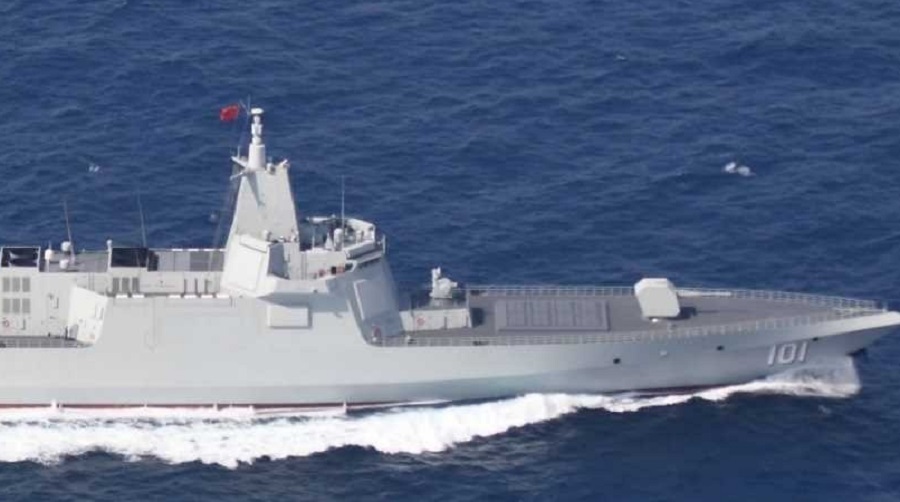
China’s Type 055 Destroyer Demonstrates Unmanned ‘Kill Web’ in Simulation
In a recent naval simulation, China’s advanced Type 055 destroyer effectively employed a network of unmanned systems, referred to as a ‘kill web,’ to counter a simulated attack by a U.S. naval fleet. The exercise, conducted by the China Ship Development and Design Centre in collaboration with Huazhong University of Science and Technology, aimed to assess the destroyer’s defensive capabilities against a formidable adversary.
Simulation Details and Outcomes
The scenario was set in the Western Pacific, east of Taiwan, where a single Type 055 destroyer faced off against eight U.S. Arleigh Burke-class destroyers. Supported by two unmanned motherships, the Type 055 deployed 32 drones and 14 unmanned boats to bolster its defenses. The U.S. fleet launched 32 advanced Tomahawk and Long-Range Anti-Ship Missiles (LRASM) at the Chinese warship. However, the integrated unmanned systems detected and neutralized the incoming missiles, leaving the Type 055 unscathed. The unmanned boats retained sufficient ammunition to counter any subsequent attacks.
Advancements in Unmanned Naval Warfare
This simulation underscores China’s ambition to revolutionize naval warfare through the large-scale deployment of unmanned platforms. The ‘kill web’ concept enables rapid and precise neutralization of enemy threats, providing an asymmetrical advantage in potential naval conflicts. The use of cost-effective unmanned systems to counter high-cost enemy weaponry could significantly alter the dynamics of military engagements in regions like the Taiwan Strait.
Cost-Effectiveness of Unmanned Systems
Professor Yu Minghui, an AI expert and lead researcher in the study, highlighted the cost-effectiveness of China’s unmanned systems. The small unmanned boats used in the simulation are equipped with short- and medium-range missiles that are less expensive than American counterparts, such as the RIM-116 and SM-2 missiles, which range from $1 million to $2.4 million. The total cost of intercepting the 32 U.S. missiles in the simulation was estimated between 160 million yuan and 270 million yuan (approximately $22 million to $37 million), a fraction of the expense associated with deploying equivalent U.S. missile defense systems.
Implications for Future Naval Strategies
The successful demonstration of the Type 055 destroyer’s ‘kill web’ highlights the evolving nature of naval warfare, emphasizing the strategic value of integrating unmanned systems into traditional naval operations. As nations continue to develop and deploy advanced unmanned technologies, the dynamics of maritime conflict are poised to change, potentially redefining naval power in the 21st century.
Conclusion
China’s Type 055 destroyer’s effective use of an unmanned ‘kill web’ in a simulated naval engagement showcases the country’s advancements in integrating unmanned systems into its naval strategy. This development reflects a broader shift towards leveraging technology to achieve strategic advantages in potential maritime conflicts.


















